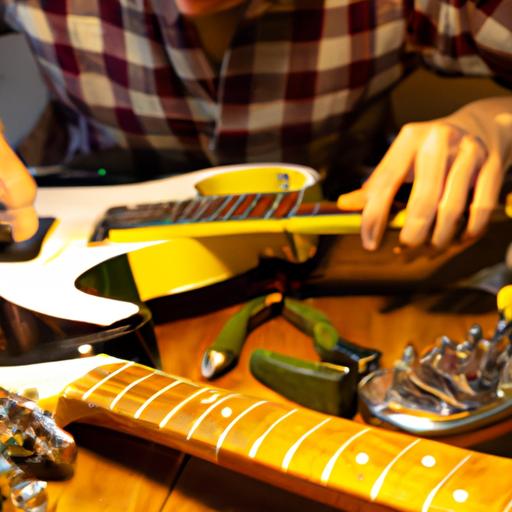
Whether you're a beginner or a seasoned musician, taking proper care of your guitar is crucial for its longevity and performance. Neglecting maintenance can lead to costly repairs or even the need for a new instrument altogether. In this article, we'll go over the importance of guitar maintenance and care, as well as provide tips and steps for cleaning, restringing, tuning, and protecting your guitar.

Regular guitar maintenance and care not only extends the life of your instrument, but it also ensures that it will perform at its best. Neglecting guitar maintenance can lead to issues like fret buzz, poor intonation, and even warping of the neck or body.

A well-maintained guitar will not only sound better, but it will also be easier to play. Proper cleaning and maintenance can also help prevent rust and corrosion on metal parts, as well as protect the finish of the guitar.
In this article, we'll cover the following topics:
Cleaning your guitar regularly not only keeps it looking great, but it also helps prevent buildup of dirt and grime that can affect the sound quality. Dust and oils from your hands can build up on the strings, fretboard, and body of the guitar, impacting the sound and playability of your guitar.
You'll need a few basic materials to clean your guitar:
Regular cleaning of your guitar will not only help it sound better but also prolong its life span. For more detailed information on how to clean your guitar, check out our article on guitar cleaning tips.
Over time, guitar strings can become worn, corroded, or even break. Old strings can not only negatively impact the sound quality of your guitar, but worn strings can be harder to play and cause tuning issues.
When it comes to restringing your guitar, you'll need a few basic materials:
For more detailed information on how to restring your guitar, check out our article on how to restring your guitar.
Tuning your guitar is one of the most important maintenance tasks you can perform. A guitar that is out of tune not only sounds bad, but it can also make it harder to play.
You'll need a guitar tuner to ensure that your guitar is in tune. Some tuners clip onto the headstock of the guitar, while others can be used on your phone or computer.
For more detailed information on how to tune your guitar, check out our article on how to tune your guitar.
Guitars are sensitive instruments that can be damaged by extreme temperatures, humidity, and direct sunlight. Protecting your guitar from the elements can help prevent damage and prolong its life span.
For more detailed information on how to protect your guitar from the elements, check out our article on how to protect your guitar from humidity and temperature changes.
The nut and bridge of your guitar are essential components that can affect the playability and sound quality of your instrument. Checking these areas regularly can help prevent issues like string buzz and intonation problems.
You'll need a few basic materials to check the nut and bridge:
Checking the nut and bridge of your guitar regularly can help ensure that it plays and sounds its best. For more detailed information on how to check the nut and bridge, check out our article on how to set up your guitar's action.
Checking the frets on your guitar can help prevent issues like fret buzz and intonation problems. Frets can wear down over time, impacting the playability and sound of your guitar.
You'll need a few basic materials to check the frets:
Checking the frets on your guitar regularly can help ensure that it plays and sounds its best. For more detailed information on how to check the frets, check out our article on how to level and crown your frets.
The truss rod of your guitar is a crucial component that helps maintain the proper amount of tension on the neck of the guitar. Adjusting the truss rod can help prevent issues like fret buzz and warping of the neck.
You'll need a few basic materials to adjust the truss rod:
Adjusting the truss rod of your guitar regularly can help ensure that it plays and sounds its best. For more detailed information on how to adjust the truss rod, check out our article on how to adjust the truss rod on your guitar.
The finish of your guitar not only affects its appearance but also its sound quality. Protecting the finish can help prevent scratches and chips that can impact the overall look and playability of your guitar.
You'll need a few basic materials to protect the finish of your guitar:
For more detailed information on how to protect the finish of your guitar, check out our article on how to care for the finish of your guitar.
Regular guitar maintenance and care is essential for the longevity and performance of your instrument. From cleaning and restringing to tuning and protecting, taking care of your guitar will help it sound better and be easier to play.
We hope that this article has provided you with valuable information and tips for maintaining and caring for your guitar. By implementing these tips, you can ensure that your guitar will continue to sound and play its best for years to come.
For more information on guitar maintenance and care, visit our website.